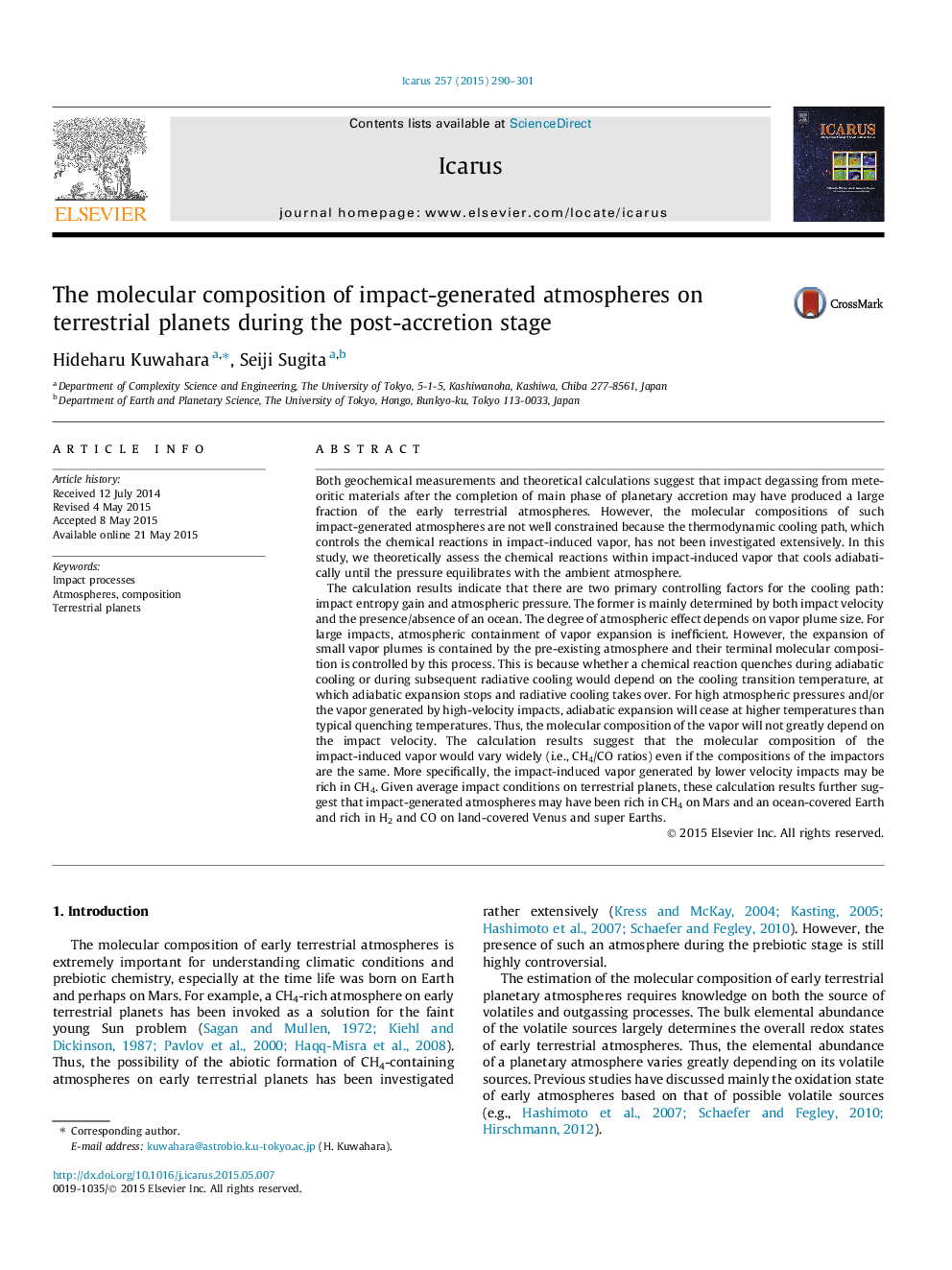| کد مقاله | کد نشریه | سال انتشار | مقاله انگلیسی | نسخه تمام متن |
|---|---|---|---|---|
| 8136124 | 1523533 | 2015 | 12 صفحه PDF | دانلود رایگان |
عنوان انگلیسی مقاله ISI
The molecular composition of impact-generated atmospheres on terrestrial planets during the post-accretion stage
ترجمه فارسی عنوان
ترکیب مولکولی جو های تولید شده بر روی سیاره های زمینی در مرحله پس از تکامل
دانلود مقاله + سفارش ترجمه
دانلود مقاله ISI انگلیسی
رایگان برای ایرانیان
کلمات کلیدی
فرآیندهای تاثیر گذار، اتمسفر، ترکیب، سیارات زمینی،
موضوعات مرتبط
مهندسی و علوم پایه
علوم زمین و سیارات
علوم فضا و نجوم
چکیده انگلیسی
The calculation results indicate that there are two primary controlling factors for the cooling path: impact entropy gain and atmospheric pressure. The former is mainly determined by both impact velocity and the presence/absence of an ocean. The degree of atmospheric effect depends on vapor plume size. For large impacts, atmospheric containment of vapor expansion is inefficient. However, the expansion of small vapor plumes is contained by the pre-existing atmosphere and their terminal molecular composition is controlled by this process. This is because whether a chemical reaction quenches during adiabatic cooling or during subsequent radiative cooling would depend on the cooling transition temperature, at which adiabatic expansion stops and radiative cooling takes over. For high atmospheric pressures and/or the vapor generated by high-velocity impacts, adiabatic expansion will cease at higher temperatures than typical quenching temperatures. Thus, the molecular composition of the vapor will not greatly depend on the impact velocity. The calculation results suggest that the molecular composition of the impact-induced vapor would vary widely (i.e., CH4/CO ratios) even if the compositions of the impactors are the same. More specifically, the impact-induced vapor generated by lower velocity impacts may be rich in CH4. Given average impact conditions on terrestrial planets, these calculation results further suggest that impact-generated atmospheres may have been rich in CH4 on Mars and an ocean-covered Earth and rich in H2 and CO on land-covered Venus and super Earths.
ناشر
Database: Elsevier - ScienceDirect (ساینس دایرکت)
Journal: Icarus - Volume 257, 1 September 2015, Pages 290-301
Journal: Icarus - Volume 257, 1 September 2015, Pages 290-301
نویسندگان
Hideharu Kuwahara, Seiji Sugita,
